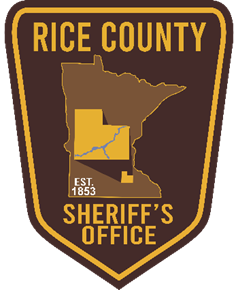Although tornadoes can form at any time of the year, tornado season in Minnesota generally runs from March through September.
Tornado Alerts
Tornado Watch
 A Tornado Watch is issued by the Storm Prediction Center (SPC) in Norman, Okla. when atmospheric conditions are favorable for severe thunderstorms to produce tornadoes. Forecasters at the SPC evaluate many atmospheric conditions – including wind speed and direction at different levels of the atmosphere – to determine where tornadoes may form. When a Tornado Watch is issued, continuously listen for updated forecasts and possible warnings.
A Tornado Watch is issued by the Storm Prediction Center (SPC) in Norman, Okla. when atmospheric conditions are favorable for severe thunderstorms to produce tornadoes. Forecasters at the SPC evaluate many atmospheric conditions – including wind speed and direction at different levels of the atmosphere – to determine where tornadoes may form. When a Tornado Watch is issued, continuously listen for updated forecasts and possible warnings.
Tornado Warning
A Tornado WARNING is issued by the National Weather Service (NWS) or Rice County Emergency Management. The NWS issues a Tornado WARNING when a tornado is identified and confirmed by trained spotters. In addition, the NWS will issue a Tornado WARNING based on radar images. A Tornado WARNING means a tornado has been spotted on the ground or is indicated by radar. When a Tornado WARNING is issued, take cover immediately!
A tornado Watch can turn into a Tornado WARNING from a half-hour to a just a few minutes in advance of a tornado. While improving technology lets forecasters to predict weather further in advance with a greater degree of accuracy, there are still occasions when nature throws a surprise at us, spinning up a tornado with little or no warning.
Mitigation
Mitigation is the process to minimize the effect of a tornado. This process should take into account personal safety as well as property damage. Implement mitigation activities well before tornado season. Waiting until the last minute does not provide the protection you might otherwise. Have a plan of action. Knowing what you will do when a tornado is approaching will help you get out of harm’s way and protect your property, fast.
Mitigation efforts for a tornado can take place any day of the year, including:
- Planning what you would do in the event a tornado watch or warning is issued.
- Purchase a weather radio.
- Designate a tornado shelter and route to it.
- Stock the tornado shelter with basic supplies.
Preparedness
Preparation for a tornado should begin when a Tornado Watch is issued. Activities should include:
- Listen continuously to weather reports when threatening weather is anticipated. If possible listen to a NOAA radio, broadcast radio, or television throughout the day.
- Check on the elderly, children who may be in school or at a friend’s house, and your pets.
- Stay close to a safe shelter in the event a warning is issued and be ready to act quickly.
- Bring a mattress or blanket to your tornado shelter to protect yourself, if needed.
- Double-check the supplies in your tornado shelter.
Response
Take immediate action when a Tornado WARNING is issued!!
If you are in a building:
- Go to the basement. If there isn’t one, crouch or lie flat in an inner hallway or small inner room or stairwell.
- Stay away from large halls, arenas, shopping malls, and so on (their roofs could collapse).
- Stay away from windows.
- Go to the center of the room. Debris can sometimes come through walls.
- Get under a piece of sturdy furniture such as a workbench or heavy table or desk and hold on to it.
- If you have time, get a mattress or blankets to protect your head and the heads of any children with you. If you don’t have time, use your arms to protect your head and neck.
- If you live in a mobile home, get out and find shelter elsewhere in a permanent building.
If you are caught outside and there is no shelter:
- Lie down in a ditch or ravine, protecting your head.
- If you are driving, get out of and away from the car. It could be blown through the air, or roll over on you.
- Be aware that heavy rain may cause flooding.
Recovery
If you are involved in a tornado damaged area, be prepared to operate without assistance from public service agencies for a period of time. A tornado can cover a wide area and there may not be enough emergency service personnel available to help you on a timely basis. After a tornado:
- Remain calm, especially around children.
- Check for any gas leaks and turn the valves off if there’s a leak.
- Turn off electricity if there are signs of sparks.
- Stay away from downed power lines and other harmful debris.
- Listen to local officials, and emergency management personnel.
- Check on the elderly and your pets.
- Use a flashlight and not candles to inspect damage.
- Watch for any loose debris that could fall.
- Take pictures of your damaged property for insurance claims.
